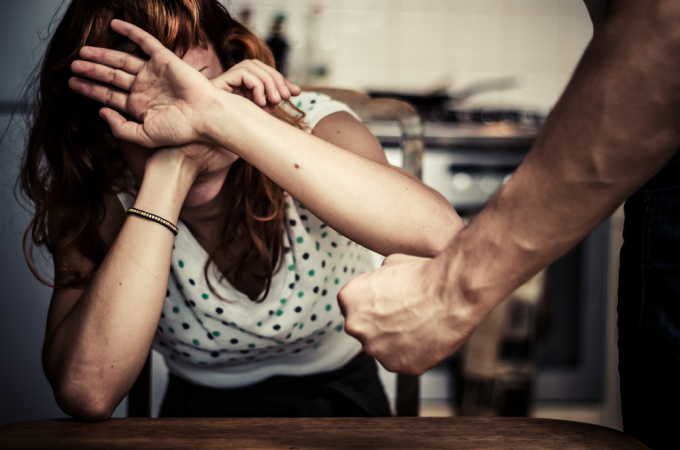
Part II: Yes, We’re Still Going to Talk About A Fair Fight
The New Age of Domestic Abuse in 2014
In “Fight Fair” Part 1, PINK showed you the statistics of domestic abuse in the United States and why cases like Ray Rice make domestic abuse everyone’s battle. Domestic violence has become a trending topic in modern media, but those numbers have to account for more than just what we see on television. We often forget that celebrities are people too, so they are no exception to statistics and censuses. So what action do we take at home to fight these numbers? First and foremost, knowledge is power. Domestic violence prevention advocate (and my amazing mother) Desonuia Johnson-Wise served on the board of Hope Harbour battered women and children’s shelter. I was ten years old at the time. Now at the age of twenty, I realize how imperative education is to ending these assaults on women. Desonuia teaches us how to recognize the red flags of abuse before anyone starts swinging. Share this with other women (and men) to expose potential abuse and abusers :
- Pushes for Early Commitment/Unrealistic Expectations- Pressures an exclusive relationship on the partner prematurely (almost immediately), and expects the “perfect” partner that meets all their needs, even the unreasonable ones.
- Jealously/Overly Possessive- Pushes to know where you are at all times. Checks mileage on your car. Monitors your phone records/texts/social media. Prevents you from going out for fear “you might meet someone.”
- Criticism (non-constructive)/Intimidation – Insults you, particularly about sensitive subjects, privately and publicly. Ugly name-calling, speaking blatant cruelty, degrading you—in other words, verbal abuse.
- Controlling- Dictates what you wear. Interrogates constantly about who you see and what you do, insists you ask permission to do things. Enforces rigid “gender roles.”
- Excessive texts/calling/email, etc.- Constantly checking on you to see where you are, who you are with, and what you are doing. Gets upset or threatens you when you do not respond.
- Isolation- Tries to prevent you from having a phone or car in order to be able to hold down a job. Keeps you away from family and friends to prevent them from “causing trouble” in your relationship.
- Blame Game/Hypersensitive- Blames others or you for abusive behavior. It’s never their fault. “You make me so angry,” instead of “I am angry.” Says, “You’re hurting me by not doing what I say.” Easily insulted or “hurt” when really they are just mad. Claims injustice when situations are just a part of life, or they are simply wrong. Severe mood swings, switching from sweet to aggressive and violent in a matter of minutes.
- Threatening- Says they will hurt you or themselves if you stand up to them or leave. Then backpedals, claiming they didn’t mean it.
- Forcing sex- Enjoys using force in intimacy (throwing you down or pinning you against you will). “Plays” with the idea of rape.
- Financial restrictions- Holds all access the monies and properties of the household. You have to “ask” for money for simple tasks like grocery shopping. Keeps only his name on the home, the car, etc.
- Cruel/Abusive to Children/Animals and others- Brutally killing or punishing animals. Teasing children until they cry or enlisting them to tasks beyond their ability. Aggressive with others, such as roughing up at a waiter or purposely dirtying a custodian’s clean floor. Want to know if someone will be abusive towards you? Watch how they treat other people.
These red flags may seem like they’re not a big deal, but over time they equal an entirely new animal. In the new age of feminism in 2014, one would hope that women would not tolerate being hit. However, 2014 is also the new age of cynicism, and people forget that abuse is not only physical, it is mental. The abuser breaks down self-esteem with these red flags, so by the time a woman is actually hit or punched, they already feel they deserve it. The reason women still find themselves in abusive situations is because the red flags are not talked about in our communities.
So we teach the red flags, we blast the abusers on Twitter, and women are still battered. Now what? Another issue of domestic abuse is that it is underreported. Getting mad at an abuser on social media raises awareness, which is also good, but the change begins when the public takes action. If you see a woman being publicly battered, report it. If you are an abuser, turn yourself in and get the help you need. Teach boys to respect girls. And never allow children of the opposite sex to get violent with each other. Encourage women and girls from the start to get and education and build their own lives so they are not dependent and have to eat a partner’s dirt just to survive. Start with the woman in the mirror, and let’s mobilize to make the fight fair.
By Jessica Wise
Recommended
-
The Power Of Saying “No” W...March 22nd, 2024
-
Is It Time To Change Your Rela...March 20th, 2024
-
What’s Your Legacy?December 18th, 2023
-
Be Here Now—Two Easy StepsSeptember 19th, 2023
-
16 Questions To Ask Yourself T...May 16th, 2023















